I used Google Street View quite a bit to look around Columbus while writing this week’s series of posts on the inaugural 1940 Columbus Pilgrimage. Frankly, the armchair traveler has never had it better, as one can drive the streets of the world from the comfort of the computer. However, sometimes one sees things on Google Street View that are unexpected and disconcerting, which happened to me when looking at various areas of Columbus. And no, I am not talking about the crazy things all those blurred people get up to. Using the “time travel” feature of Street View to see Columbus in 2009 and 2013, I saw that a noticeable number of historic buildings, mostly old houses, were demolished in that four year period. While Thomas Rosell has posted about this feature of Google Street View in the past and its usefulness to historic preservationists, Preservation in Mississippi has never had any posts showing the changes in one city over just a short period of time. This post takes a look at six historic Columbus buildings demolished in the four years between Google Street Views.
Mississippi State University Extension Center, Lowndes County Office at 512 3rd Avenue, North
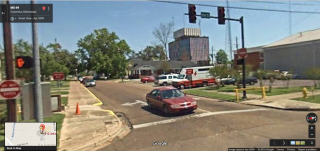
512 3rd Avenue, North, Columbus – April 2009 Google Street View (looking from Fourth Street, the closest 2009 view)
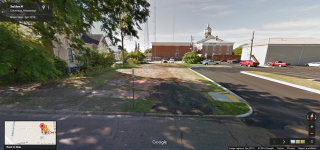
512 3rd Avenue, North, Columbus – April 2013 Google Street View (looking in front of where the house was located)
The house was listed on the National Register as a contributing resource to Columbus Central Commercial Historic District. From the 1980 National Register Nomination Form:
“88. Cooperative Extension Service, 512 3rd Ave. N. Bungalow. One-story multijerkinhead gable-roof brick former residence: exposed and ornamented purlins full-width porch supported by square tapered piers on brick plinths. Ca. 1930.”
The Lowndes County Board of Supervisors unanimously approved demolishing 512 3rd Avenue, North in November 2011, according to the Columbus Dispatch. The Columbus Historic Preservation Commission previously and unanimously ruled that the house could be demolished, though they brought up whether items could be salvaged from the house. The Board of Supervisors declined to allow any architectural salvage work, leaving that up to the demolition contractor. This house is one of the few I could find demolition information on; most of the other buildings in this post disappeared quietly and anonymously.
Friendship House at 317 7th Street, North
The Friendship House was not one of those houses that disappeared quietly and anonymously. The house’s location across the street from the General Stephen D. Lee House made it a prominent landmark, as did its striking triple front gable design. The battle over this house’s demolition was one of the loudest and most acrimonious preservation fights Columbus has had in quite a while.
Like the 512 3rd Avenue, the Friendship House was listed on the National Register as a contributing resource to Columbus Central Commercial Historic District. From the National Register Nomination Form:
“199. Beard’s Traditions Interior Design, 317 7th St. N. Two-story multigable-on-hip roof frame former residence: clapboard siding; two-story gable-roof central pavilion; jigsaw-cutout vergeboards; full-width one-story verandah with roof balustrade; verandah supported on paired Doric columns. Ca. 1890.”
The furor over the Friendship House’s demolition by First Baptist Church was covered by JR Gordon and Malvaney in posts and News Roundups on April 19, May 3, and June 13, 2011. Of all the demolitions reported on Preservation in Mississippi since 2009, the Friendship House’s demolition is one of the most duplicitous and spiteful. In synopsis, First Baptist Church administrators abandoned the house for the better part of a decade, refused to sell the house during that time, announced demolition plans, then offered to allow preservationists to save the house by “giving” the house away for $1 to anyone who could move a two-story house within thirty days, and finally demolished the “soon to be forgotten by world” house at the crack of dawn when the arbitrary thirty day period was over. All this so that the church could have a vacant lot a block away, across a fairly busy street, for a congregation actively abandoning its current downtown location for the sprawl of Bluecutt Road. Unfortunately, like the house at 512 3rd Avenue, North, the Columbus Historic Preservation Commission did approve the demolition of the Friendship House after staying it for six months. Columbus Dispatch articles alluded to possible changes with the Columbus HPC because of this demolition, but there has been little further news reported since 2011.
House at 625 Main Street
This Main Street house was listed on the National Register as another contributing resource to Columbus Central Commercial Historic District. From the National Register Nomination Form:
“50. Something Special Dress Shop, 625 Main St. Italian Villa. One-and-a-half-story gable-on-hip-roof frame: gable front and side extentions; encircling verandah now glass-enclosed; central two-story square tower with mansard roof and round-arch windows. Ca. 1880.”
Despite the altered and enclosed front porch, the remainder of the house was architecturally intact on the exterior. One can tell from the Street View that it needed a new roof but the house’s condition likely mattered far less than its location: on a good-sized lot in a commercial district. 625 Main was one of the last remaining historic houses on Main, which was a noted residential thoroughfare until ravaged by banks, bank parking lots, church complexes, and other commercial structures. The nearest remaining historic residential property on Main Street is at 804 Main.
House at 804 Main Street
Well, the house at 804 Main was the nearest remaining historic house. The house was listed on the National Register as a contributing resource to South Columbus Historic District. From the National Register Nomination Form:
“278. Loventrice Beauty Shop. 804 Main Street. One-and-a-half-story multigable-on-hip-roof frame; extended gable front with chamfered corners, porch with bracketed and turned posts. Ca. 1900.”
Google Street View shows the house still extant in April 2013. However, the house would not see the end of 2013. Its owner, Dutch Oil, bulldozed it in December. The Columbus Dispatch published a “Downtown demolition” photograph of all its Victorian-ness being crushed into kindling.
House at 619 6th Avenue, South
The house was listed on the National Register as a contributing resource to South Columbus Historic District. From the National Register Nomination Form:
“463. 619 6th Avenue South. Two-story multigable-on-hip-roof frame residence; extended gable front with chamfered corners, one-story encircling Ionic-columned verandah with corner turret. 1905-10.”
I was able to find nothing online about this house’s demolition. That such a house in such a historic neighborhood could disappear so quietly is off-putting. Whoever owns the vacant lot has been trying to sell it for the past few years as a “beautiful residential building lot in a most desirable Southside neighborhood.” A restored, National Register-listed house would make any building lot or neighborhood more desirable than empty grass or a new particleboard and plastic faux-historic house.
Old Lowndes County Health Department at 1112 Military Road
The Old Lowndes County Health Department was a restrained Colonial Revival design by Columbus architect William Irby Rosamond. Though eligible for the National Register based on construction date, it was not listed. Constructed in 1948, it is the earliest known design for which Rosamond was the primary architect; he opened his firm in 1946 after World War II service and, previous to that, work with other architecture firm. Rosamond was president of the Mississippi Chapter of the AIA in 1957. Many of his architectural records are at MSU Special Collections, invaluable for not only containing records of his own designs but other architects’ drawings (as a professional courtesy, architects would send drawings of their designs to other architects doing later additions or alterations; if I remember correctly from looking through the collection, Rosamond’s records contain some rare C. H. Lindsley drawings).
The Lowndes County Board of Supervisors unanimously approved demolishing the Health Department in August 2012 after two years of vacancy. The building was demolished in December of that year. The Board of Supervisors asked for bids on the vacant lot after the demolition but received no bids after several months.
The Old Lowndes County Health Department was just the most prominent landmark demolished along the Military Road corridor. Several Craftsman bungalows and other small houses were demolished from 2009 to 2013, all replaced with vacant lots in an area becoming increasingly filled with vacant lots and buildings, a worrying sign on one of Columbus’s most historic roads.
This post chronicles just some of the historic buildings demolished in Columbus over that four year span. Google’s Street View coverage of Columbus in 2009 was limited, and there are some historic areas not surveyed which saw building demolitions. I also did not Street View every street in Columbus; other Preservation in Mississippi readers will have to point out any demolished houses that I did not cover in this post.
Now, Columbus is not Mississippi’s only city where unnecessary demolitions have occurred in the past few years and is certainly not the worst (here’s to you, Meridian), but Columbus is rightly considered one of Mississippi’s most historic cities. In such a place, it is troubling that several Victorians and Craftsman bungalows, houses located in National Register-listed historic districts, have been demolished with seemingly no vocal protests (with the exception of the Friendship House demolition). While it is the antebellum houses that bring in visitors, how will visitors feel while touring some of these antebellum mansions to see vacant lots where Victorians and other neighboring historic houses have been needlessly demolished? What can be done so that everyone, including property owners, public officials, and the general public, will appreciate all historic buildings, including “ordinary” Victorians and Craftsman bungalows, and not just Pilgrimage landmarks? That question can be asked in every Mississippi community, indeed, everywhere across the country.
One final question to ask is: when Google Street View next drives through Columbus or any other historic Mississippi area, how many new vacant lots with disappeared historic houses will we see?
Categories: Columbus, Demolition/Abandonment, Historic Preservation, Hospitals/Medical, Lost Mississippi, National Register

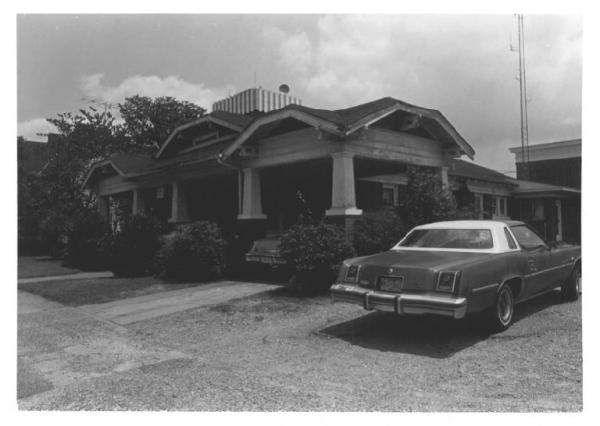
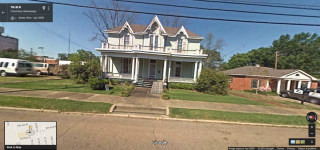
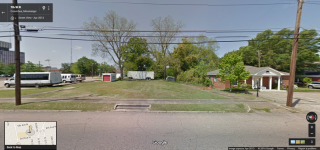
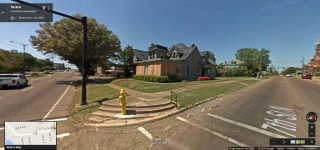
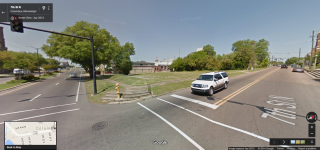
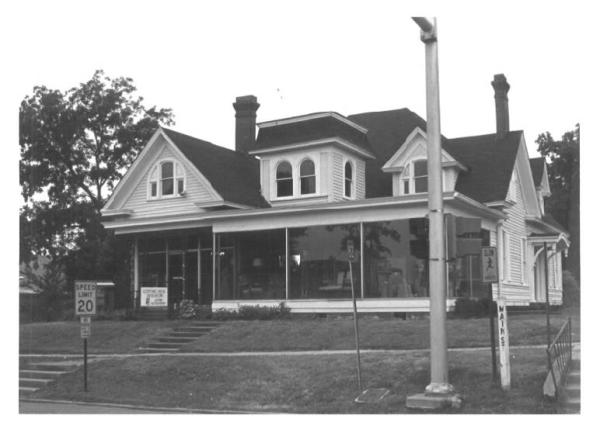
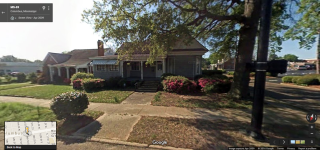
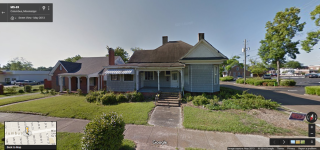

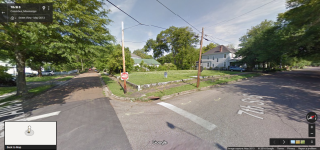
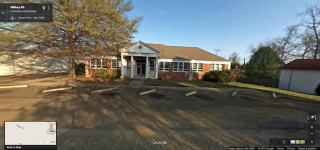

619 6th Ave South…fire destroyed this one. Thank you for writing this. I hope it will make everyone aware of the importance of our historic structures.
LikeLike
I wonder what were the circumstances behind the fire. I recently saw a historic building burn near where I live that has made me suspicious of many historic building fires, especially if those buildings are vacant (though I have no idea whether 619 6th Avenue, South was vacant or occupied).
Like I said in the post, how can preservationists all over the state, not just in Columbus, make historic preservation the default position; so that we do not have to have posts documenting disappearing historic buildings.
LikeLike
Very interesting! This was a lot of work and very useful to show how our architectural heritage is disappearing. You could do a similar comparison in many other Mississippi towns.
LikeLike
Thank you. I shudder to think how long the post would have been if Google Street View had covered every Columbus street in 2009 and 2013 and if I had virtually traveled down every street. Google only covered between a quarter and a third of Columbus’s streets in 2009. So, I found these six demolitions just in one-third of Columbus’s historic neighborhoods. Due to time, I also edited out three or four Victorian cottages, Craftsman bungalows, and Colonial Revivals that were demolished along the Military Road corridor.
As you have brought to our attention so well on your site, what would it look like if I used the same technique on Vicksburg, an equally historic city. Six Columbus buildings would probably turn into sixty Vicksburg ones.
LikeLike
Jesus. (Not the Baptist Jesus, evidently.) I somehow had the obviously VERY mistaken notion that the town of Columbus had some respect for history. They sound like malevolent Neanderthals.
LikeLike
I think if I did this for every Mississippi city, like Andrew Morang suggests, we would find that Columbus is definitely not the worst. I would bet on either Meridian or Jackson. However, the Friendship House demolition is one of the most spiteful demolitions anywhere in Mississippi since Preservation in Mississippi has been active. There must be something about Baptist Churches and organizations; Patterson-Bradford Rexall Drug Store in Jackson by Robert Overstreet was needlessly demolished by Baptist Hospital and Jackson’s First Christian Church has been allowed to rot by First Baptist Church for years. Those are just two of many, many demolitions by Baptist organizations in the past few years, from Columbus, to Jackson, to Greenwood, to Philadelphia; all over the state.
LikeLike
I grew up in Starkville, and I loved those historic homes. I have not been there in many moons, so this story was my first visit back. I remember the Friendship House. It was always a treat to drive by ever so slowly, and as a little girl, pretend that I lived there. It hurts my heart that all of these places have been bulldozed–seemingly with little or no public awareness or acknowledgment. What was going on during the years of 2009-2013? I certainly don’t remember real estate being at its prime. What was the Board thinking? And, what was the big deal in not letting the preservationists salvage the insides of the home? I mean, so? Why did the Board care–what was the big idea? Was there some big secret the city didn’t want people to know about? Or could it be that Sloth, from The Goonies, lived there, and that would just be entirely too awkward to explain? On a different note, however, wasn’t Columbus the city in which many families (early settlers) migrating from the Carolinas and Georgia settled in? It will be a heartbreaker when their ancestors come looking for where great great grandmother grew up–if they haven’t already, and all they see is a splotchy lot of dead grass. How encouraging is that? 😕
LikeLike
The latest news from Rufus Ward as Columbus rides down that PC slippery slope that began with Nikki Haley in South Carolina. Now Ambassador Haley threatens to wipe North Korea and its inhabitants off the map. How ironic that Trump would appoint her as ambassador to the UN. Shortly after Hurricane Katrina in 2005, the SCV’s Rick Forte of Hattiesburg told me that Donald Trump had donated $25,000 towards the restoration of Beauvoir.
http://www.cdispatch.com/opinions/article.asp?aid=62848
LikeLike
Please do one of these articles on Tupelo!
LikeLike
Based on the response to this article, I am considering doing a series of them. Tupelo would be a good city, given its many recent preservation losses, to cover.
LikeLike
Riverview gets new owners.
http://cdispatch.com/opinions/article.asp?aid=50456
LikeLike
Don’t forget the Beckrome House or the Taylor-Burns House. Now they want to demolish the Teasdalr House. Columbus has no commitment to preserving its historical architecture.
LikeLike
I agree that Columbus’s wealth of historic buildings belies its well-earned reputation as a city lacking in a strong preservation ethos. I have certainly harped on this topic before, several times, including in the above post and in the post “Economic Hardship and Historic Preservation in Mississippi: An Overview and Case Study in Columbus.”
Preservation in Mississippi also covered the demolitions of Beckrome (“Is Another Antebellum Columbus House – Beckrome – In Danger Of Being Demolished?“) and the Taylor-Burns House (“MissPres News Roundup 6-25-2019“). Both were very regrettable and unnecessary losses.
We also spotlighted the Teasdale House a few years ago, when Columbus wanted it demolished (“MissPres News Roundup 11-21-2016“) and it was put up for sale and sold to someone who planned to restore it (“Preservation in Mississippi Historic Real Estate“). It would be very unfortunate if that restoration did not come to pass, and the Teasdale House is once again in the crosshairs of demolition.
LikeLike